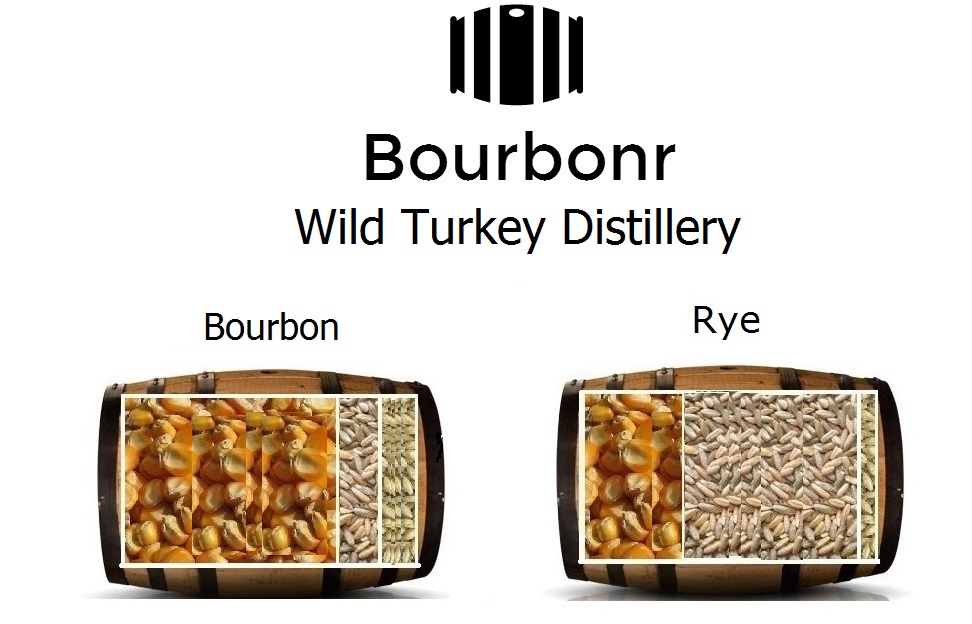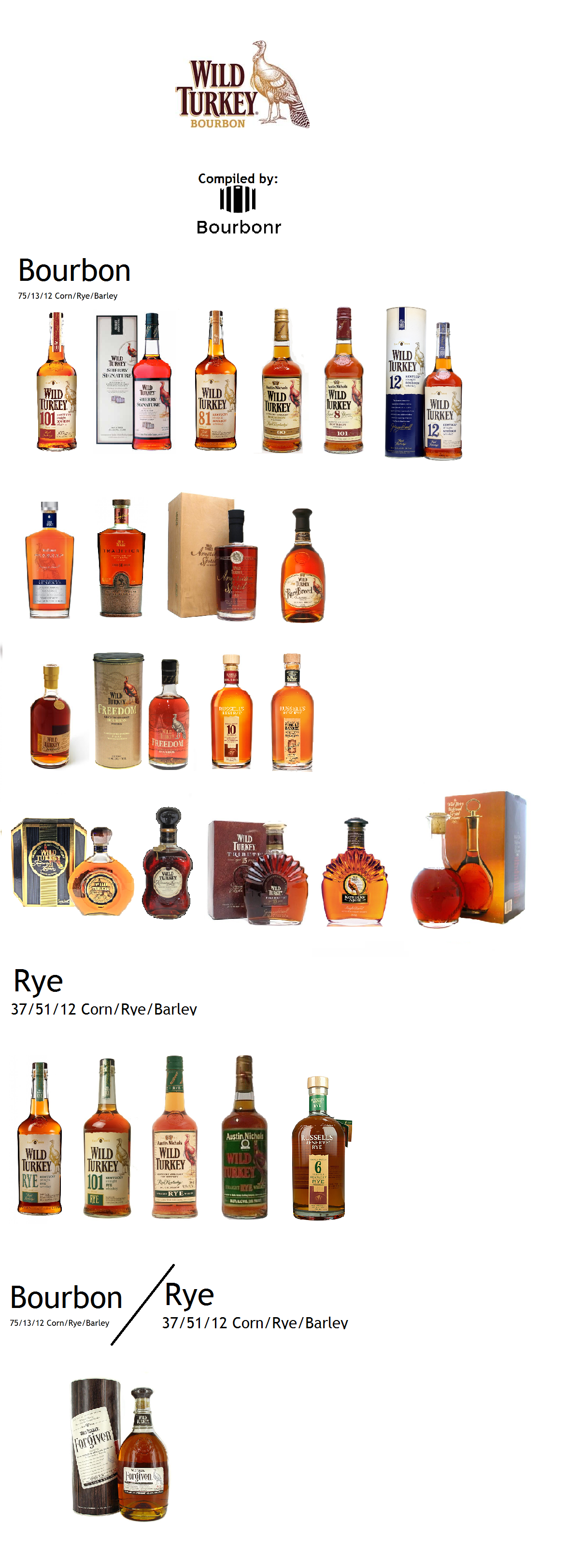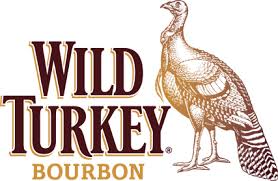Wild Turkey Mash Bill Breakdown
Wild Turkey by Mash Bill
This is the final major distillery of the Bourbonr mash bill breakdowns. Wild Turkey mash bills are simple. One bourbon (75/13/12 corn/rye/barley) and one rye (37/51/12 corn/rye/barley) with most likely the same yeast strand for each. What’s interesting is how they’re able to produce different flavor profiles with age and warehouse location as their only variables. I’ve also heard that Wild Turkey takes wider cuts during the distillation process which increases the spiciness of their whiskey.

Wild Turkey as a brand and distillery is rich with history. A little known fact is that Wild Turkey began as a Non-Distiller Producer (NDP). While they’re now owned by global beverage conglomerate, Campari, Wild Turkey was originally started by Austin Nichols & Co., a grocery wholesaler from New York, in 1940. It wasn’t until 1972 that Wild Turkey purchased the Ripy Brothers distillery in Lawrenceburg, KY. Wild Turkey has made some great whiskey over the years. While (in my opinion) they’ve been in a little bit of a slump lately I’m pretty excited about the release of their 17 year old bourbon.
By the way, Rare Breed is still one of the best bourbons $40 can (consistently) buy. Wild Turkey 101 rye used to hold this same title for rye whiskey until they dropped the proof a couple of years ago. It didn’t get the same attention as the Makers Mark proof drop it was more disappointing to me. For years, Jimmy Russell was an advocate for high proof (101 or greater) whiskey and now they’re just one proof over the legal requirements.
This map doesn’t include every label but should include most Wild Turkey whiskies. It became too difficult to try and include every Russell Reserve or Wild Turkey 101 label change.



24 comments
What do you mean when you say that Wild Turkey “takes wider cuts” during the distillation process?
Also, can you provide any additional details such as;
Barrell entry proof?
Warehouse construction type?
Lastly, Have they ever, or do you think they might release some older Bourbons in the US market?
To the best of my knowledge, Wider cuts refers to the amount of the heart cut a distillery uses. You have three “cuts” head, heart and tails, with the heart being the one that is culled for aging. Heads can be poisonous, and tails are generally of a much lower quality of the raw spirit. Some distilleries use a very narrow heart cut, and some use more of the heart. I am sure Blake can expand on this and correct me if I am wrong
This is close to correct. However, “wider cuts” means they are actually cutting farther into the tails. A brief explanation of what this means and why. Distillation is the process of separating components in a liquid based on boiling temperature. Alcohol boils at a lower temperature than water therefore we can separate it from water and create a more concentrated alcoholic solution. However, other things boil at lower temperatures than water. The stuff that boils at lower temperatures than alcohol is called the “heads.” The heads are toxic and should be discarded. Ethanol (or alcohol) is called the hearts. This is kept. However, alcohol is flavorless. So only the flavor compounds that have the same boiling temperature as alcohol will carry through in the hearts. If you want more flavor you have to dip into the tails. The tails aren’t toxic but they aren’t exactly great for you either. Usually spirits with a higher concentration of tails will lead to a worse hangover. Cheaper spirits often have more tails in them because there is still alcohol in the tails and therefore money to be made. However, everything changes a bit when you throw it into a barrel. Over the course of years in a barrel chemical interactions occur that break down some of the more harmful properties of the tails. Therefore you get left with a lot of great flavor but less hangover juice.
(source of knowledge: I give tours of distilleries:)
Excellent explanation. Thanks, Erik!
Andy did a good job of explaining below. Basically, the first liquid off the still and last part is waste. What the distiller wants is the middle section (“the hearts”). I’m trying to get someone on here to better explain the technical aspects of it but the the gist of it.
I have learned that first liquid off the still is methanol and as such, not drinkable. Is that correct? If so, why does it start as methanol and how do they know when it is no longer methanol and has changed to ethanol.
Scott,
You are correct that methanol comes off the still first and is toxic if drank which can lead to blindness or even death. The way distillers get around this is that methanol boils at a slighty lower temperature (148F) than ethanol which boils at 173F. Distillers have certain a certain temperature they begin to extract the liquid off the still. depending on how early they begin collecting is how pure the liquor is. The trick is finding the sweet spot between the highest quality liquor and having to stretch it out enough to meet demands of the industry.
Methanol does boil at a lower temperature, and so would come off the still first. However, short of specific bacterial infections that would probably ruin the entire batch of mash, methanol is not produced by the fermentation of grain. It comes from the breakdown of pectin, and so a properly-fermented whiskey mash will not produce any methanol.
The price of their ‘diamond’ bourbon just pissed me off. I sort of lost respect for the brand’s identity when they put that out there. I’ve been glad to see it stalling on shelves
Another good one Blake.
Thanks, Jack!
In reading the comments above regarding “cuts”, I just had a brainstorm (I could smell wood burning)…it occurred to me that in tuning to a radio station, one generally finds a “sweet spot” where the station’s signal/sound quality is very clear, surrounded on either side by fading, and overlapping signals from other stations. The sweet spot would be analogous to the “heart” of a cut in bourbon or other whisk(e)y distilling, i.e. the purest, most desirable part of a spirit run.
I see Wild Turkey as an underdog in the bourbon game. The only Wild Turkey I’m able to get is the 81 and Rare Breed, I would like to try something older from them.
That’s too bad because I’ve tried them all and I think the 81 and Rare Breed are not their best. I would rank their current standard bourbons in this order:
1. Russell’s Reserve Single Barrel
2. Kentucky Spirit
3. 101
4. (tie) Russell’s Reserve 10 year (90 proof)
4. (tie) Rare Breed
6. 81
I am thinking 101 is high on the list. Never met the Kentucky Spirit but the Russels is very high on the list. Not so much a fan of rare breed or their new longbranch
Have you tried Russell’s Reserve small batch 10 years old? I like it quite a bit..
It’s ok but I find it too weak. WT recipe needs a higher proof to really shine. Try the Russell Reserve Single Barrel, if you liked the 90 proof 10 year, this one will knock your socks off.
I have noticed you don’t monetize your blog, don’t waste your traffic, you can earn additional cash every month because you’ve got hi quality content.
If you want to know how to make extra money, search for:
Boorfe’s tips best adsense alternative
I’m 55 years old and have tried many different bourbons but the only one I have stayed loyal to is Wild Turkey 101. Jim Beam is my fallback when funds are low. I can’t stand the charcoal flavor of Jack and other brands leave me wanting the Kickin’ Chicken, Turkey 101. Been drinking it since I could first buy it at 16 years old, rarely get hung over unless I indulge too much and wonder why people pay higher prices for much less quality.
Amen Shawn
Wild Turkey regular label, the cheapest one in most stores, is rubbish. My wife says it doesn’t agree with her and causes headaches and upset tummy. I stopped buying it a year or two back. Last night at my brother’s house, both my wife and I had headaches which continued into the night, and I felt queasy. I found out he’d given us both Wild Turkey. Based on this, I’ll never drink Wild Turkey again, and I wouldn’t be surprised if it contained methanol or other toxins.